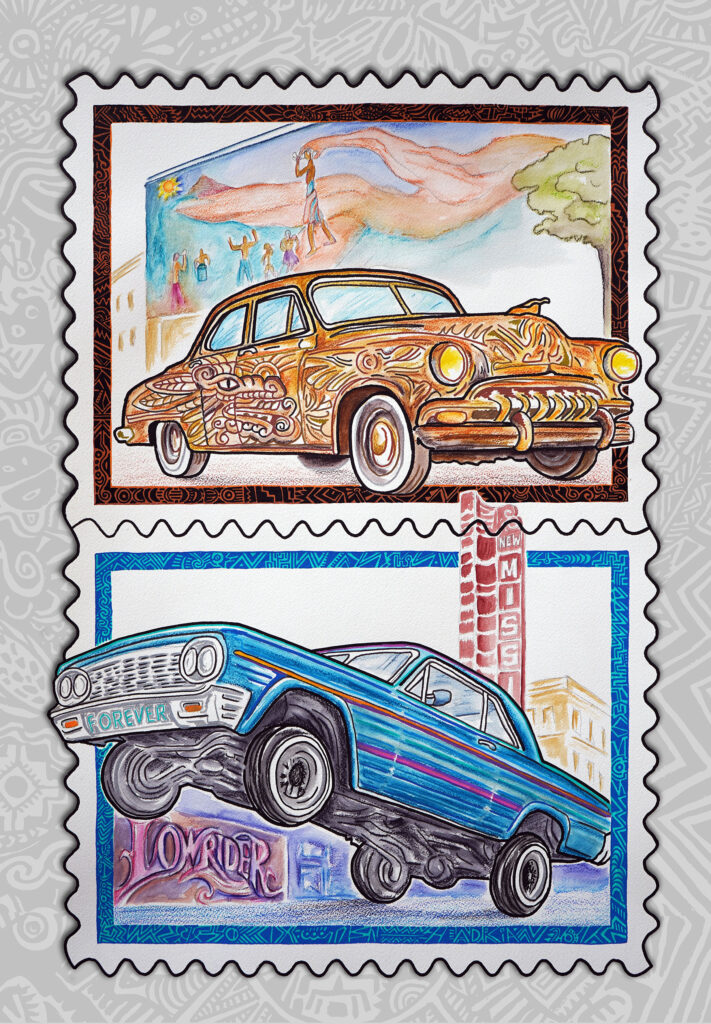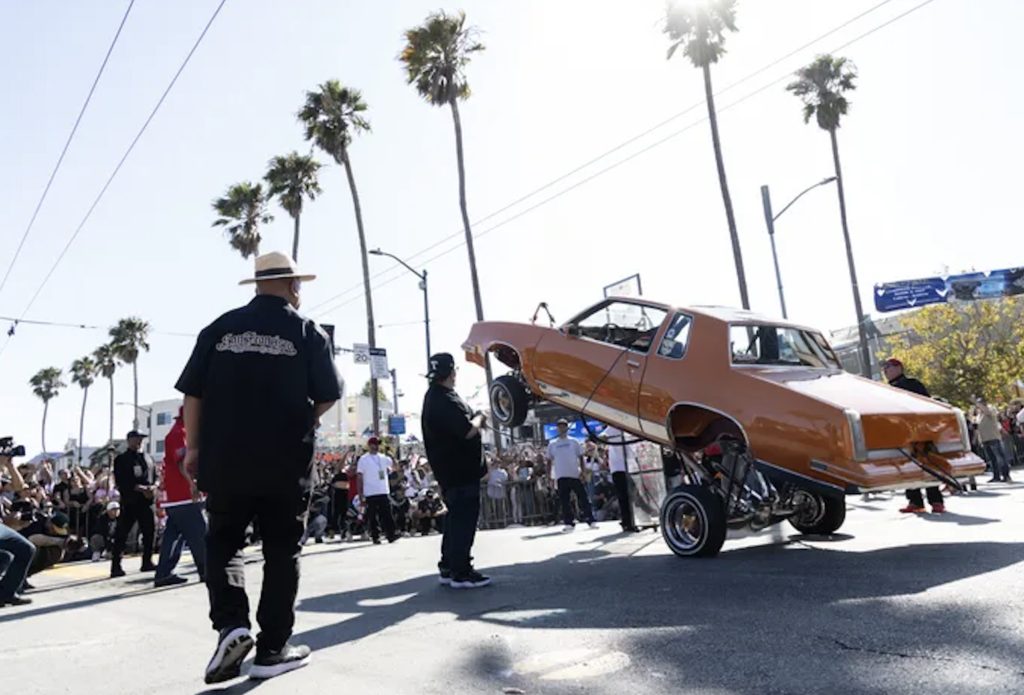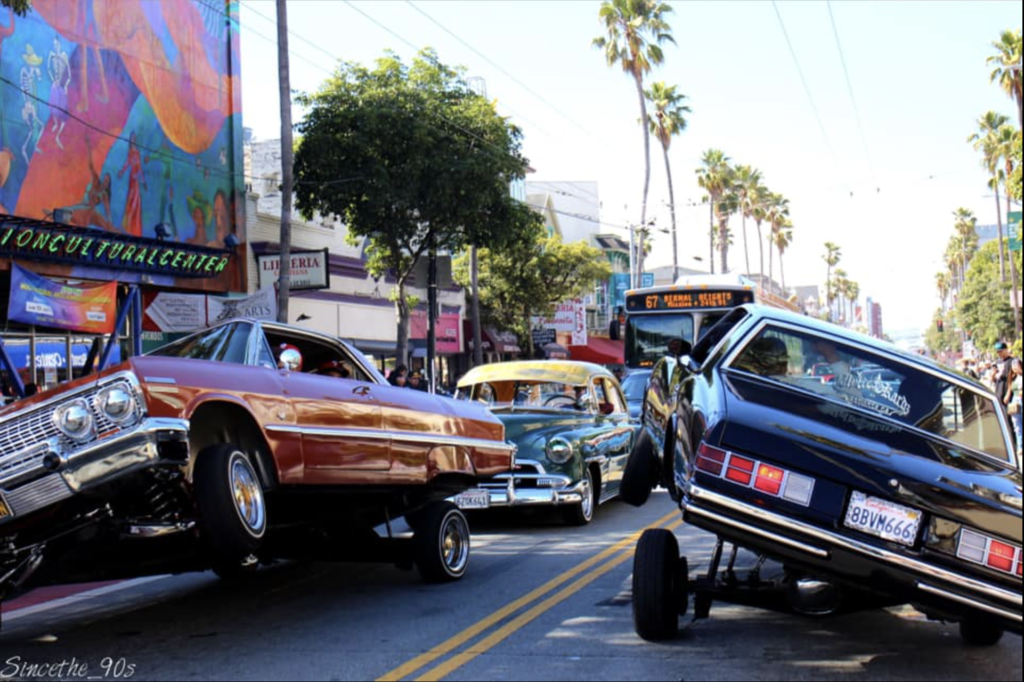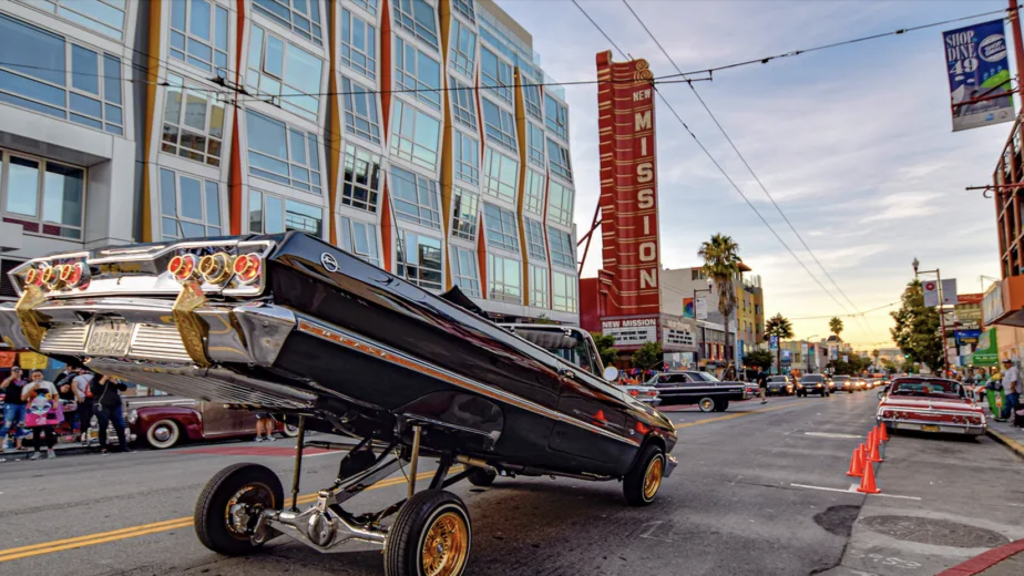Layers of The Mission: A Celebration of Memory and Resilience

Rolling Memory: The Art and Legacy of Lowriders in the Bay Area
This image, designed as a Forever stamp, honors the idea that lowrider culture is forever—a living legacy the community continues to protect, celebrate, and pass on. In the top stamp, the Mission Cultural Center stands proudly, along with the historic mural by Carlos Loarca, Betsie Miller-Kusz, and Manuel Villamor, reminding us that the Mission is a neighborhood where murals carry ancestral and contemporary stories. In the lower stamp, the iconic New Mission Theatre appears as a witness to decades of cultural evolution.
Lowrider culture in the Bay Area emerged from the creativity and pride of Mexican American veterans in the 1940s, who transformed their cars into powerful expressions of identity, resistance, and imagination. By the 1970s, the Mission District had become a vibrant center of cruising—Friday and Saturday nights filled with families, music, and cars riding low and slow from 16th Street to the Excelsior.
When police tried to suppress lowriding, the community fought back. Leading the movement was Roberto Hernández, founder of the San Francisco Lowrider Council, whose story is now part of the Mission’s living history. Arrested more than 113 times for simply driving his own car in his own neighborhood, Roberto organized students, lawyers, and neighbors to challenge police discrimination and took the case to federal court. He rejected monetary settlements, insisting the fight was about dignity: the right to cruise freely in your Impala.
This struggle led to major reforms—officers were removed from their posts, policies changed, and the community gained a vital space: La Raza Park (Potrero del Sol), a gathering place where people could celebrate and cruise without harassment. San Francisco became a model for other cities such as Sacramento and Sonoma, which later passed laws protecting the right to cruise without discrimination.Today, lowriders continue to roll as moving archives of memory, beauty, and cultural pride. Like a Forever stamp, this tradition belongs to the community—an enduring symbol of creativity, resilience, and collective identity.

Español
Memoria Rodante: El Arte y el Legado de los Lowriders en el Área de la Bahía
Esta imagen, presentada como un Forever stamp, celebra que la cultura lowrider es para siempre —una herencia viva que la comunidad seguirá protegiendo y celebrando por generaciones. En el sello superior aparece el Mission Cultural Center, institución que ha apoyado por décadas los movimientos latinos en San Francisco, acompañado por el mural histórico creado por los maestros Carlos Loarca, Betsie Miller-Kusz y Manuel Villamor, recordándonos que la Misión es un barrio de murales que cuentan sus propias historias. En la imagen inferior, el New Mission Theatre aparece como un ícono que ha sido testigo de la evolución cultural del distrito.
La cultura lowrider en el Área de la Bahía nació del ingenio y el orgullo de veteranos méxico-americanos en los años 40, quienes transformaron autos en expresiones profundas de identidad, resistencia y creatividad. Para los años 70, la Misión se había convertido en un epicentro vibrante: noches enteras de vueltas, familias, música y autos “bajitos y suaves”, iluminando la ciudad desde la 16 hasta el Excelsior.
Cuando la policía intentó prohibir esos recorridos, la comunidad se unió para defender su derecho a existir con dignidad. Al frente estuvo Roberto Hernández, fundador del San Francisco Lowrider Council, cuya lucha es hoy una parte esencial de la historia del barrio. Arrestado más de 113 veces por simplemente manejar su propio auto en su propio vecindario, Roberto organizó estudiantes, abogados y vecinos para denunciar los abusos policiales y llevar el caso a la corte federal. Rechazó acuerdos económicos, insistiendo en que no se trataba de dinero, sino de justicia: del derecho de dar la vuelta libremente en tu Impala.
Gracias a esta lucha, oficiales fueron removidos del cargo, se reformaron políticas policiales, y la comunidad obtuvo un espacio esencial: La Raza Park (Potrero del Sol), un lugar donde celebrar, reunirse y continuar la tradición con libertad. San Francisco se convirtió así en un modelo para otras ciudades como Sacramento y Sonoma, que luego aprobaron leyes para proteger el derecho de circular en lowrider sin discriminación.
Hoy, los lowriders siguen rodando como archivos vivos de memoria, orgullo y belleza. Esta tradición, como un Forever stamp, pertenece para siempre a la comunidad: un legado en movimiento que continúa celebrando nuestra historia, nuestra creatividad y nuestro espíritu colectivo.


Read an article in USA Today, full of images: bit.ly/4i4KoYx
Interview , 3 minutes on CBS, with Roberto Hernandez:
